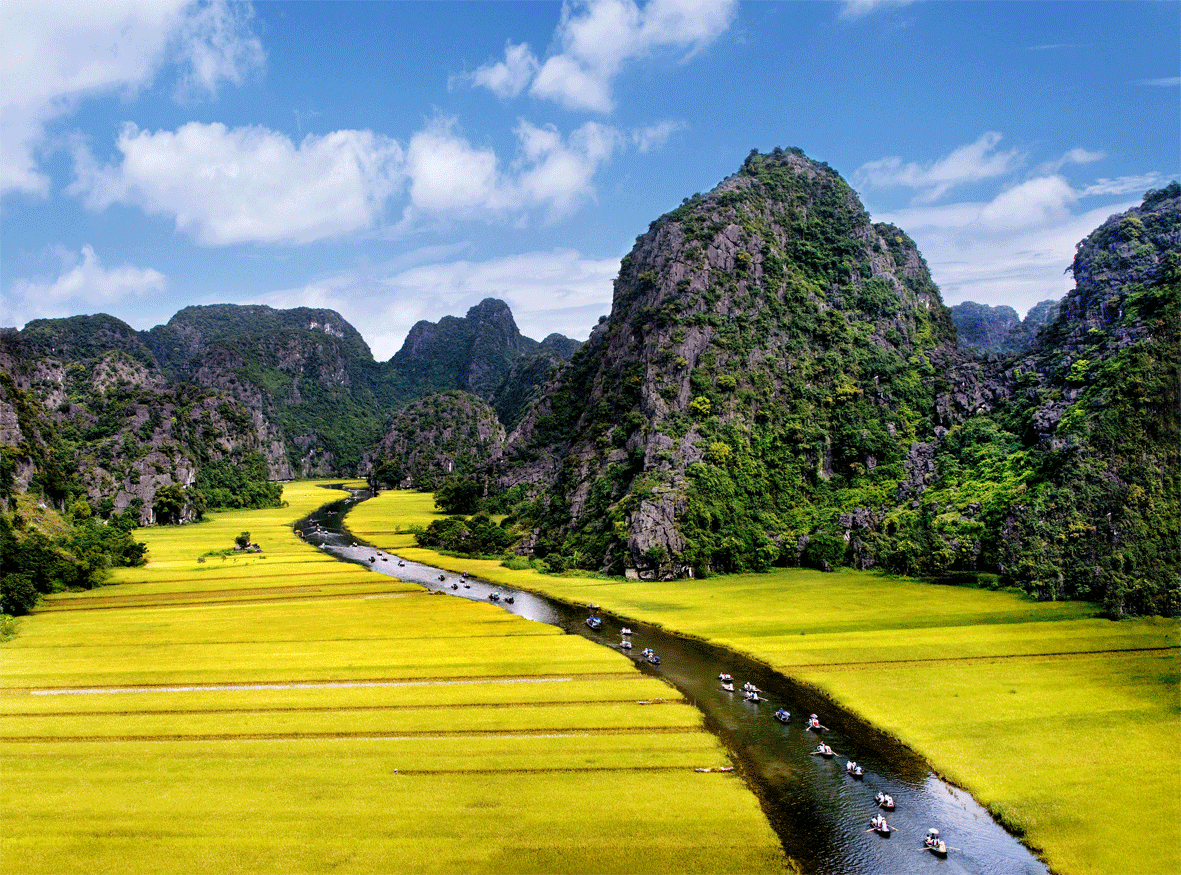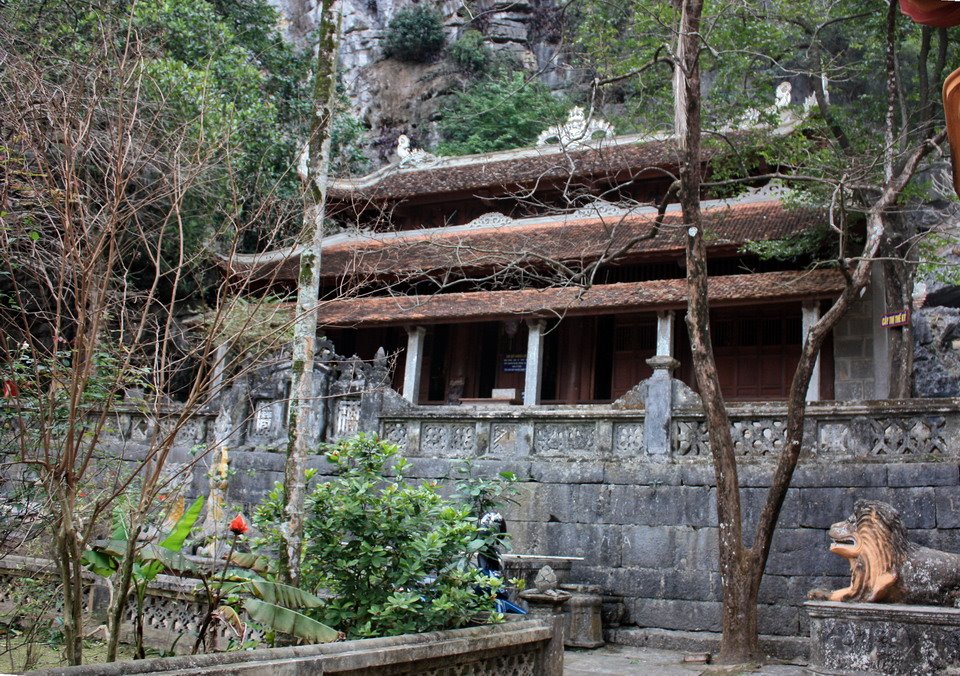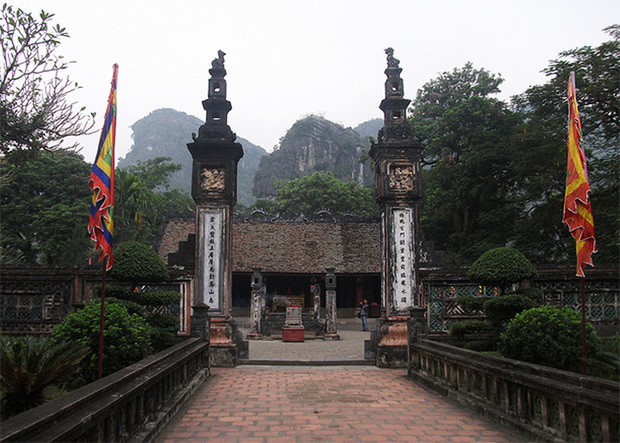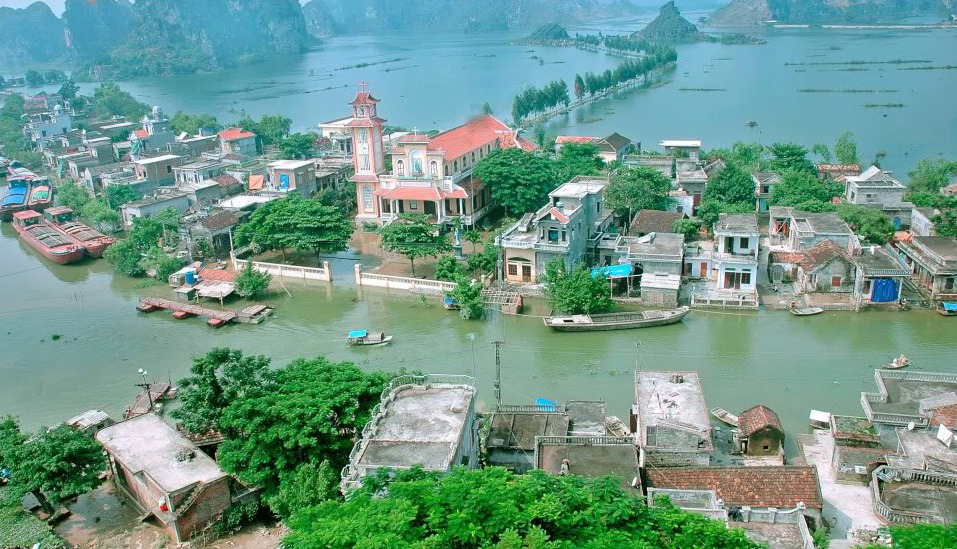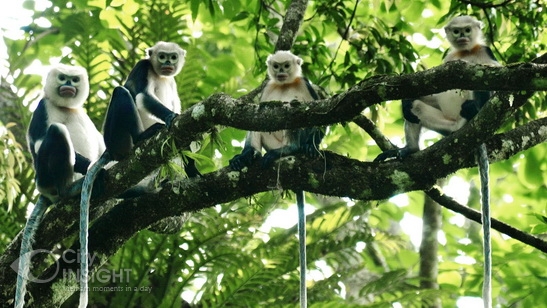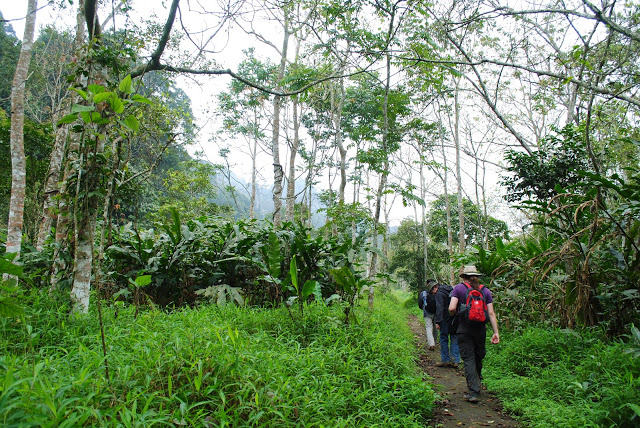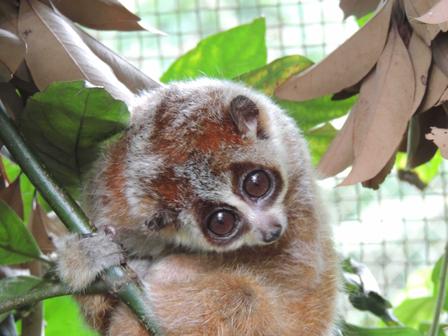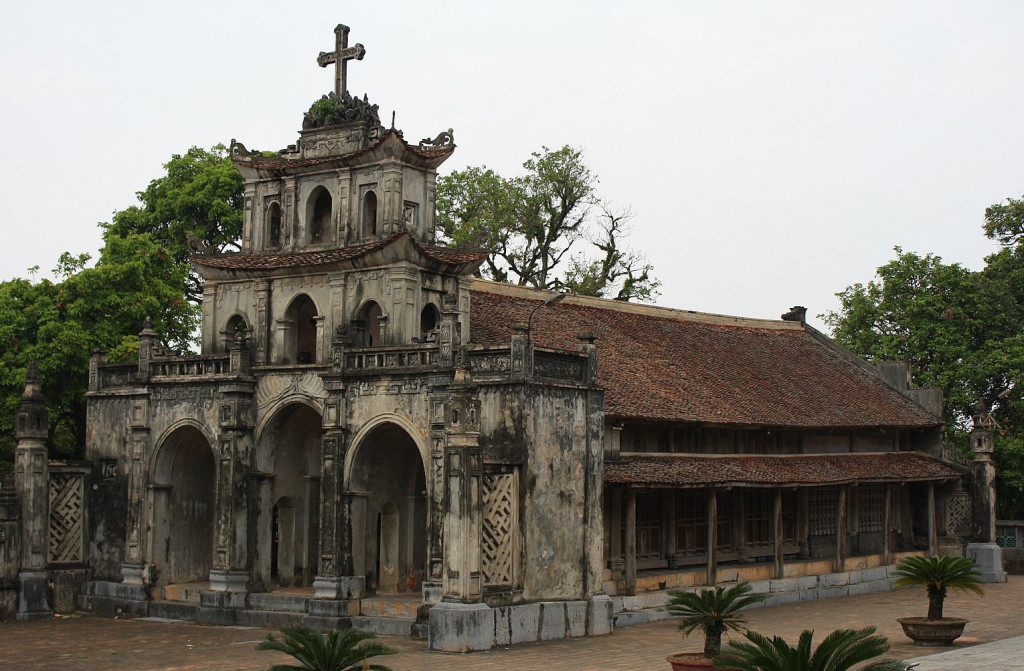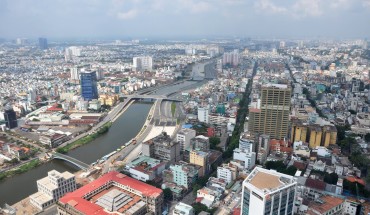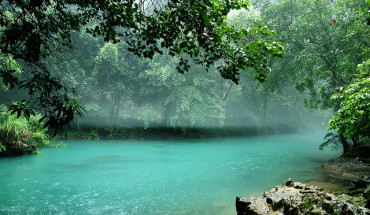The sights of Ninh Binh are scattered outside the city, too many to see all in one day. Most travelers visit Ninh Binh on a tour from Hanoi, so it’s a good idea to look closely at the sights below before joining a set itinerary.
Private tours give you lots of flexibility, and an overnight for some is preferable (especially if you want to visit Cuc Phuong National Park). A typical 1-day itinerary might be either of the following: Tam Coc (the three grottoes), nearby Bich Dong Temple, Hoa Lu (the old capital), and Phat Diem Cathedral; or Kenh Ga (chicken village), Hoa Lu, and Cuc Phuong. Note: Tam Coc and Kenh Ga require boat rides, and visitors usually find one or the other—but not both—to be plenty of floating for one day; Tam Coc is more interesting.
Tam Coc (The Three Grottoes)
Located near the village of Van Lam, 7km southwest of Ninh Binh, the Tam Coc area is a highlight of any visit to Vietnam. Called “The Halong Bay of the Rice Melds” after the UNESCO World Heritage Site north of Hanoi, the stunning limestone karst towers hearken to the famed landscape of the bay, as well as Guilin in southern China a landscape that has inspired poets for centuries.
The karst towers of Tam Coc are set in wide lowland fields of wet rice, and visitors can experience a 1-hour boat ride along a meandering river. Take in the stunning scenery as you listen to the hypnotic clacking of the oars against the side of the boat and enjoy the meditative progress of the boat along the winding river.
Tam Coc means “Three Grottoes,” after the three caves you pass through on the backtracking route. The caves transport you through a seeming portal in time, ever farther from the familiar into the misty mountain valley along this meandering stream; there is Hang Ca, Cave One, which is over 100m (328 ft.) long; then Hang Hai, Cave
Two, at 70m (230 ft.); and lastly the smaller Hang Ba, Cave Three.
At the large gated entrance, you can buy your ticket (cost is 40, 000 VND), which entitles you to visit the caves, enjoy a boat ride (you must present your coupon to the tower), and see a few adjoining temple sites. The wooden rowboats leave from a village whose main street is lined with very local linen and embroidery shops a good selection at very low prices. The rowers are a friendly lot and are happy to chat; some speak English, others smile, and everybody sings as they row, often in unison. Your new friend turns into salesman by the end of the ride, though kind of a drag. The item up for bid is embroidery, which they’ll tell you were executed by the shaking hand of an ailing grandmother, anything to get you to fork over a few dongs. Your rower has a tacit agreement with other sellers along the route to bump your boat against anyone with even a few bananas for sale. In these cases, it you whip out your wallet, you might as well shout “Free for all! Come and get ’em! Best to just quietly decline. In lieu of a purchase, a small tip to your rower at the end of the ride is a better bargain, but know (and accept) that there’s no way to fend off the sellers at Tam Coc. Tourists are like ducks on a pond. The most important thing is not to let it get you down, keep it light but say “no” and keep your eyes on the passing scenery.
The time to go to Tam Coc is after 10 am (the morning fog obscures the shape of the precipitous peaks). If you arrive too early and the place is still foggy, take a ride by road out to Bich Dong Temple, and then come back for the boat trip when things have burned off. By midday, though, the sun is blistering and the open boats offer no shade Local hucksters are quick to make the most of your misery and sell (or rent) umbrellas to ward off the sun, but it’s best to just bring a good hat and cover up with sunscreen. Along the route you’ll see shy kingfishers flitting about, as well as cranes padding around the paddies and floating weeds. Local fishermen, quite used to the steady stream of tour sits, are busy setting nets and paddling about in boats the size of snow saucers. Some fishermen row with their feet, while others use the unique standing technique of leaning forward and pushing the oars in a heaving forward lunge; the stroke is beautiful to watch, but try doing it and sec how difficult it is.
Bich Dong is a stunning temple complex at the base of high cliffs about 2km miles) past the starting point for boat rides to Tam Coc. A pond is near the entry, and the main temple courtyard gives way to a series of pagodas along the short path up the high rocky hillside: a good vantage point over the surrounding countryside. Note: At this sacred place, as at other temple sites, it’s best to be well behaved and stay covered up (no shorts), even though no one officially checks or enforces a dress code.
Hoa Lu-The Ancient Capital
For a short period at the end of the first millennium (a. d. 968-1009), Hoa Lu was the capital of Vietnam under the Dinh dynasty and the first part of the Le dynasty. The area was chosen because the limestone formations surrounding the site the same ones that attract tourists by the thousands were a stalwart natural defense against the Chinese The temples of Hoa Lu are worth a visit and part of most itineraries out of Ninh Binh The two temples, both dedicated to respective Le and Dinh kings, are ornate 17th-century recreations on the site of some ancient ramparts and walls, but what makes the trip interesting is the beautiful scenery of the area, especially along the rural road connecting the site with nearby Tam Coc (see above). The whole valley is hemmed in with high limestone walls of karst, much like the dynamic setting of Tam Coc. One temple honors Dinh Tien Hoang with an imposing statue. The other temple, farther from the road across a large field often used for large festivals, is dedicated to Le Dai Hanh, one of Dinh’s generals and the first king of the Le dynasty, who grabbed power in a. d. 980 after Dinh was mysteriously assassinated. Hoa Lu can easily be seen on a day trip from Hanoi. The temples are 113km (70 miles) south of Hanoi.
Kenh Ga (Chicken Village)
Here, tour among floating villages teeming with life, where local oarsmen (and women) row with their feet. Photographers delight. Reach the site by motorbike, either your own rented machine or on the back of a bike with a driver. The village is more than 10km west of Hwy. 1 starting at a juncture 11 km north of central Ninh Binh.
Cuc Phuong National Park
Ho Chi Minh established Cuc Phuong in 1962 as Vietnam’s first national park, and it remains a source of national pride. The park is a lush mountain rainforest with more than 300 bird and 100 mammal species, including tigers, leopards, and the unique red-bellied squirrel. But the park’s many visitors mostly large domestic tour groups, especially on the weekends might keep you from the kind of wildlife experience you expect in the brush.
Cuc Phuong is just 120km (75 miles) south of Hanoi and a 30 minute ride from Ninh Binh. A little town with very basic services (food stall, gasoline stand) is outside the park’s first gate. Once in the park, you’ll pass first the visitor center, a small museum on your right, and then the park’s popular Primate Resource Center (see below) on your left before reaching the main gate. There, check in at the main information booth and connect with the park’s able guides and rangers (ask to talk with a guide named Mr. Som). Your entrance fee includes a guide who will accompany you on a visit to the Primate Resource Center and who can be hired for $15 a day to take you on hikes in the park.
A well-paved road runs through the length of the park, and trails and roadside sites are all well marked. Cuc Phuong hosts good hikes, including ones to the park’s 1,000-year-old tree, a waterfall, and Con Moong Cave, where prehistoric human remains have been discovered. The park holds 117 species of mammals, 307 types of birds, 110 reptiles and amphibians, 65 species of fish, and 2, 000 kinds of insects. The rare Asian black bear and the golden leopard live here.
Cuc Phuong National Park Endangered Primate Rescue Center (030/384-8002; www.primatecenter.org ) is the highlight of a visit to the park. Run by an international team of primate experts, mostly from the Frankfurt Zoological Society and supported by zoos worldwide, the project houses some 150 animals in cages, large monkey-houses with swinging bars, and, at the back, a sprawling semiwild jungle enclosure (good for the animals, not great for viewing them). Find many species of gibbon, multicolored langurs, including the very rare, protected Catba golden-hair langur and the endangered Delacour’s langur, and the teacup-size slow loris. Animals are lovingly cared for, in the best situation possible, and they put on quite a show hopping, hollering, and swinging from ropes in large enclosures. Note: Though you pass the Primate Center on your way to the main gate, you must still check in at the park’s main entrance and backtrack, with a guide, to visit the animals; this policy ensures some measure of control over the number of visitors and their impact on these very intelligent, sensitive creatures.
The goal of the center is to create stable captive populations of endangered animals and eventually through socialization and acclimatization in the semi-wild habitat, reintroduce animals to the wild. If you visit the park on a day tour from Hanoi, you’ll come at the wrong time: midday, when animals are listless and resting in the heat. Folks with an interest in primates will want to spend the night and might even have a chance to meet up with staff or researchers who can provide more in-depth information. A small civet- breeding program is next door.
The 1,000-year-old tree is at the end of a good loop hike that starts at the park’s interior visitor center, some 30 minutes’ ride past the gate. The path is well marked, mostly paved, and set up with convenient walkways, but the jungle scenery is dense and, if you walk quietly, you might catch a glimpse of some wildlife (especially in the morning or evening).
The Cave of the Prehistoric Man is just a roadside attraction, a short hike off the main drag up a hillside with a wide cave. The cave was discovered in 1966, and the remains of an early man along with his stone tools and relics are said to date back as far as 12, 000 years ago. The walkway to the site is a good place to sit still and see what kinds of wild things you can spot.
Cuc Phuong is a good day trip from Hanoi, and some tourist cafes offer programs for as little as $30 (if you have four people in your group); but a day trip means arriving in the middle of the day, when jungle animals are fast asleep and when the heat and humidity, especially in the spring hot season, can be too much. It is also possible to overnight in the park headquarters or at the visitor information center. They offer basic rooms in a block building at the entrance. One of the most pleasant aspects of visiting Cuc Phuong is the possibility of connecting with visiting naturalists and scientists (when I was there, I met a large contingent from the Philippines), and the overnight accommodations, though rustic, make for a fun evening especially with a gaggle of scientists in the canteen. There’s a lake just inside the park, which is set up like a small summer camp for large groups, usually Vietnamese school kids, and the site echoes with good Vietnamese campfire songs.
Foreigners comprise only a small percentage of the 70, 000 people or so who visit the park annually, and the large groups of Vietnamese tourists and many school groups are not yet well versed in eco-tourism practices. (I kept coming across a group of more than 50 school kids, all dressed in the same bright yellow T-shirts and wearing oversize straw hats, led by a guide with a bullhorn blaring instructions and information so much for animal spotting) Talk to guides about good night-spotting trips and rigorous overnights in the jungle.
Phat Diem
Popular in conjunction with a visit to the ancient city of Hoa Lu, a visit to Phat Diem cathedral is an important pilgrimage for the faithful or the architecture buff. Nowhere will you find such a unique melding of contemporary Christian motifs with Asian-style architecture.
The site is 121km (75 miles) southeast of Hanoi and about 25km (16 miles) south and east of the town of Ninh Binh. The road passes through beautiful areas of lush low land rice fields and past many lesser cathedrals and Christian burial sites; Note that Ton Dao Church, just outside of town, is a particularly imposing edifice with high stone spires, intricate carvings on lintels and facade, and reliefs of St. Francis ministering to the sick and impoverished. The town of Phat Diem is just a little commercial strip not much to see, really.
Follow signs to Phat Diem from the main road, down a narrow street that spills onto a broad courtyard at the end of its length. At the center of the courtyard is a pond with an expressive statue of Jesus, and beyond that is your first glimpse of the cathedral.
Enter to the right, but be sure to go back and experience the temple starting at the large Chinese-style gate. The church and grounds uniquely blend East and West. The main cathedral, an imposing wooden structure, has Chinese-influenced parapets, the roofline upturned at the corners, and out front are elaborate lintel bas-reliefs of saints that would elsewhere be Buddhas. All of the structures are decked out in Chinese roofs of terra-cotta tile, and small Chinese pagodas pepper the grounds around the main cathedral. The building stands flanked by a number of small chapels.
The Cathedral of Saint Joseph the first building you reach when making a clockwise circuit around the main temple was built in 1896 and is made of wood and covered in elaborate engravings and carvings. Behind it is the Chapel of St. Pierre, also built in 1896. Usually the interior is closed to the public (most chapels here are), but if you peak along the sides of the altar, which is a 1-ton block of stone, in the back you can see reliefs of the Twelve Apostles and their names in Chinese letters.
Far back on the left is the diminutive Stone Chapel (Legise de Pierre), a very refined structure of glossy marble. The chapel is dedicated to the Virgin Mary, and out front is an engraving (in four languages) that reads, “Immaculate Heart of Mary Pray for Us.” Relief works on the cornices of the building depict mythical beasts.
Completing the circuit, and near the entrance of the cathedral grounds, the temple to St. John the Baptist is where locals once came during a cholera epidemic to invoke the help of St. Roch and, when miraculously healed, renamed the building Koch Chapel.
The interior of the main chapel is like any Chinese temple, with thick wooden pillars supporting a raised gallery. Red and gold filigree at the altar would be more familiar in a small city temple in Hanoi or Ho Chi Minh City, which makes this cathedral unique. Statues of Mary and Jesus take the place of an expected Buddha, and stained glass depicts both European and Vietnamese martyrs. The main altar was cut from stone block and was consecrated on October 6, 1991, on the 100th anniversary of the temple that was originally built in 1891.
Phat Diem is a working cathedral, and services are ongoing throughout the day.


